In 1996, Apple bought NeXT, not only bringing Steve Jobs back to the company he co-founded, but bringing with him all the engineers and technology that would be used to replace the classic Macintosh operating system with Mac OS X, now, macOS.
Catalina, which has been available in beta form since its introduction back in June, and which goes into general release today, is the 15th version of that operating system, of the brain that runs every modern Mac.
It's legitimately one of the most exciting macOS launches ever. But it's also one of the most turbulent.
Let me explain.
macOS Catalina review: In Brief
Because there's no next NeXT for Apple to move to, the company has been doing what a responsible, mature platform company should do — step by step, year over year, methodically replacing older components with new ones. 32-bit to 64. OpenGL to Metal. Objective-C to Swift, HFS+ to APFS, AppKit to SwiftUI. These are the biggest examples but there are innumerable smaller ones.
From Arcade to Music, TV+ to News, are launching and venerable old iTunes simply can't keep up. So, it's now been broken up into its constituent parts. Many will love the new sleekness but some may well miss the old monolith.
It's a process that takes time, and one that can be messy and painful. Especially for people who have known and depended on the older technologies and implementations for years, for decades even. But also for those waiting for the new technologies to mature, to be polished up.
Not every app moved to 64-bit or was re-written in Swift year one. Not every volume was migrated to APFS immediately. And many developers won't be able to make full use of this version's new technologies like Catalyst, never mind SwiftUI, just because Catalina has shipped. We're in the midst of multiple massive paradigm shifts, each of which will take several versions to play out. Some, we're finishing up with Catalina. Others, we're just beginning.
Likewise, security. Gone are the days when the ubiquity of Windows provided the best virus protection imaginable for the Mac. The threat levels have changed, as have the threats themselves. So, Apple is being forced to go back and try to balance the traditional openness of the Mac while retro-fitting the defense-in-depth that was built into iOS from the beginning. And, while they try to find that balance, casual users might be annoyed by increased privacy disclosures and power users, increased root-level restrictions.
We're in the midst of multiple massive paradigm shifts, each of which will take several versions to play out. Some, we're finishing up with Catalina. Others, we're just beginning.
At the same time, Apple's scope is growing. Services new and established, from Arcade to Music, TV+ to News, are launching and venerable old iTunes simply can't keep up. So, it's now been broken up into its constituent parts. Many will love the new sleekness but some may well miss the old monolith.
Throw in some new apps and updates, ports, and new user-facing features that continue to leverage the full Apple ecosystem by letting iPads serve as secondary displays and iPhones work as a massively distributed Find My network for Mac…, and awesome new accessibility features like Voice Control, and we have macOS Catalina.
An update that shows Apple is getting better and better at leveraging everything that's come before while continuing to push forward, but still struggling with just how many landings they can really stick, year over year.
I've already done the deep technical dive. You can find 11,000 words and a full hour of video on that linked below. What I want to do here, now, is talk about the implementation and the experience.
Not how it works, which is chock full of really smart, really cool technology, but how well it works for the humans at the other end of the machine.
Read all the technical details about macOS Catalina in the deep-dive
macOS Catalina review: macOS Catalina Beta
Quick note: If you've been on the macOS Catalina Beta train but now, with the official release, you want to get off, just launch System Preferences, click on Software Update, click on the tiny Details… text at the bottom left under the big gear icon, and then click on Restore Defaults.
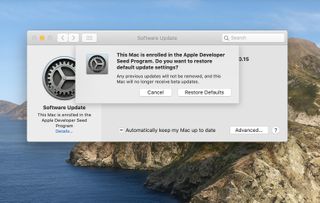
Do that, and your next update will be the next release version. Otherwise, you'll stay on the beta and can keep testing for as long as you like.
How to download and install macOS Catalina
macOS Catalina review: The End of 32-Bit Apps
The Mac has been shipping with 64-bit processors since before the Intel transition of 2005 and 64-bit was a headline feature of macOS going all the way back to Leopard in 2007.
Now, with macOS Catalina, the transition is complete. 32-bit apps, dragged along this past decade, will now launch no more.
But, killing the past is what Apple does to better embrace the future and, more than a decade of writing-on-the-wall later, 32-bit apps deserve to die.
You can see if you're still running any 32-bit laggards prior to updating by clicking on the Apple icon in the menu bar, clicking on About this Mac, hitting System Report, Applications, and then going through the list of apps. If any of the 64-bit (Intel) fields say no, it means that app isn't going to survive the upgrade.
If you don't do that, or if you upgrade anyway, the macOS Catalina installer will still check for you and give you a list of apps that you can't take with you. At that point, you can choose to stop and wait until you can find updates or alternatives, or to continue and leave them behind.
I'm sure there are all sorts of critical, niche apps that, despite a decade of warning, still haven't gone 64-bit. Especially abandonware. And those affected by it will no doubt be super salty that they're now officially end-of-line.
But, killing the past is what Apple does to better embrace the future and, more than a decade of writing-on-the-wall later, 32-bit apps deserve to die.
macOS Catalina review: The End of iTunes
Imagine iTunes as a bridge that carries not just billions of media files across it a year, but billions of dollars in transactions.
At any given moment, it has to let you buy Taylor Swift's new album, rent the latest John Wick movie, stream millions of songs at the drop of a Siri, download the latest episode of the Vector podcast and sync it to that old iPod nano you still use to go running with every morning, rip and catalog all of Jim Dalrymple's 84 versions of every Ozzy song, make available all the new media Sony just uploaded to launch, and maintain a ton of playlists, backups, and other data – all at the click of a button.
Oh, and be compiled to run on Windows as well.
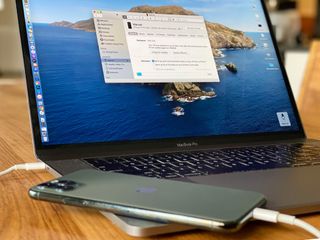
Yeah, it was a quirky old battleship of an app that would somehow still beachball on an 18-core Xeon box, but we all somehow still worked and we all understood more or less how. And one thing you just don't do with a working bridge is tear it down. Not before you've even begun construction on a new bridge.
Well, macOS Catalina finally has that new bridge. Several new bridges, actually.
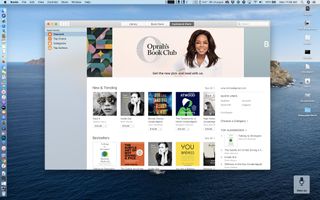
Now, I've said before, nothing is being deleted. Nothing is being canceled. Apple isn't closing the iTunes Music or Movie or TV Store. Apple isn't coming to your house to delete all your downloads.
Music, TV, and Podcasts
Everything you could do in iTunes yesterday you can still do with macOS Catalina today. There's just no monolithic, Mesozoic iTunes app to do it all in any more.
Now, it's split across new (and new-ish) Music, TV, Podcasts, and Books apps, and an extended Finder app. In other words, it's more like iOS now. Just on the Mac.
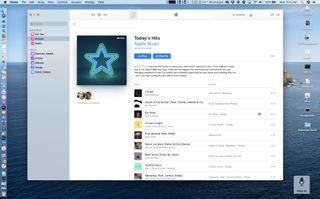
The Music and TV apps are still traditional Mac apps. So much so, they feel like the old tabs were just torn off and given new, separate shells. But, with that legacy code also comes legacy support for everything from ripping CDs to transcoding audio.
It's all been fine for me, but I'm not a heavy Music user. I subscribe to Apple Music and my use case is almost exclusively "Siri, play…" whatever I feel like listening to at any given moment. I don't do playlists and, while I still subscribe to iTunes Match, and that's all still there as well, I really can't recall what I ripped a decade ago and what's just in the online catalog today.
Yeah, I'm the music worst.
Everything you could do in iTunes yesterday you can still do with macOS Catalina today. There's just no monolithic, Mesozoic iTunes app to do it all in any more.
So, there may well be database features and views that haven't all been brought over from iTunes to Music, and I really wouldn't notice. But I'm willing to bet a bunch of other reviews will cover all that in excruciating detail for you. So, I'll retweet them as I find them.
For me, the only thing really missing is polish. The interface is a little awkward teenage years. For example, click into any content and a whole new row appears up top just to contain a single, solitary back button. The loneliest back button.
In iOS, the way it works is similar but the implementation is much better: When you tap in, the master page title shrinks and becomes the back button label in the new detail view. And the pages don't fade white to transition, they slide over to maintain a sense of spatial positioning.

The new TV app is similar. It's terrific to have it on macOS. It just doesn't have the astonishingly great card experience of the Apple TV version of the app. Also, because regional licensing deals are demented, the Apple TV app will often kick me out into a local apps, like CTV, that'll then demand a cable subscription before it'll play the show I want to watch. Which is infuriating.
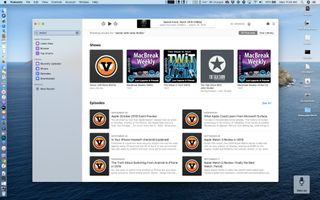
Podcasts is both new to the Mac and built using new technology for the Mac — it's a port of the iPad Podcast app. More on that later. The highest compliment I can give it is that it looks and feels pretty much identical to the traditionally built Music and TV apps.
Even going so far as to the implement that lonely, lonely back button the same way the Music and TV apps do.
Again, that's a nitpick and these are early days, but that I'm picking nits shows how far it's all come in just a year.
I really like device management moved over to the Finder. It makes sense being there and just works like it's always worked. Plug in, and your iOS device shows up in the sidebar. Click on it, then click the blue Trust button, unlock, tap trust, and Passcode in on your device, and you're in business.
You've got a General tab for management, which includes updates, restores, and backups, and then tabs for all your content. It's not pretty UI by any stretch of the pixels, but it's functional.
And, I think, for anyone who hasn't given up the cable for the cloud already, that's the important part.
The End of iTunes: macOS Catalina media strategy explained
macOS Catalina review: Apple Arcade
I posted a complete Arcade preview back in June. Link and video below. But, with macOS Catalina, Apple's new subscription gaming service comes fully to the Mac, and that's kind of a big deal.
iOS has never had a problem with games, quantity or quality. Though it's always been skewed almost completely towards the casual. The Mac, though, has spent pretty much all of its existence in the shadow of PCs and consoles both.
Arcade doesn't change the latter. There's nothing new that would really appeal to the hardcore shooters or simulators, custom rig builders or VR drivers. But it does begin to address the former.
So, you probably won't get the biggest, baddest franchises in the game, but you are getting some of the biggest labors of love by indies and studios both. And you can play them with the keyboard, the mouse or trackpad, and in many cases, the Xbox or PlayStation controllers macOS Catalina has just added support for.
For years, developers had to worry about whether or not their more creative, more experimental, more up-front game ideas could even survive in the increasingly free-to-play, franchise-driven, micro-transaction laden economy of mobile app stores. Never mind when or if they could one day even think about bringing a version to the Mac.
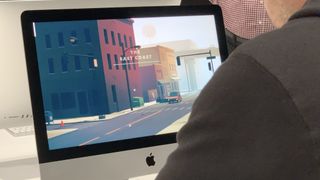
Now, with Arcade, indie and even studio developers are being incentivized by Apple to not just make the games they want to make, great games, but to make them great across all of Apple's platforms — including the Mac.
That includes its own tab and placement opportunities in the App Store, some of the most valuable real-estate in software.
So, you probably won't get the biggest, baddest franchises in the game, but you are getting some of the biggest labors of love by indies and studios both. And you can play them with the keyboard, the mouse or trackpad, and in many cases, the Xbox or PlayStation controllers macOS Catalina has just added support for.
I'm not sure how many people will pay the $4.99 per family subscription fee just to have Arcade on the Mac, but I think a lot of people who subscribe for iOS will find that, like Apple TV, also having Arcade on the Mac is an absolute delight.
Why people will pay to play in 2019: Apple Arcade explained
macOS Catalina review: New and Updated Apps
In addition to all the new and updated architectures and features — and there are plenty of both still to go over — some of the biggest updates in macOS Catalina are the other new, or newly updated apps.
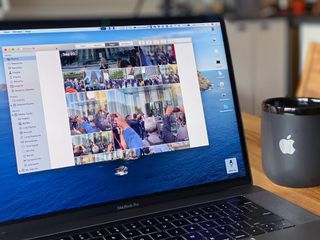
The updated Photos app is great. Like the similarly updated iOS version, the main views now all filter out duplicates and clutter like screenshots or document captures. Then, they use machine-learned "saliency" — a fancy way to say relevancy – to focus on the people, faces, and highlights of each photo. Finally, they grid them up in different sizes, with videos and Live Photos in motion, to make for a really immersive browsing experience.
Sadly, we're not getting all the new video editing capabilities Apple just added to Photos for iOS. They are simply nowhere to be found in Photos for macOS. No rotating videos, no adjustments or filters.
The idea is to present you with your "best shots". And, in an age where most of us take so many photos so always, we can barely remember what we took this week, never mind over the last few years, it really cuts through a lot of clutter to make something closer akin to old fashioned albums. Not in how it works but in what it means for our memories.

Speaking of which, Apple's auto-generated Memories movies proper, can now be tweaked on the Mac as well. Make them dreamy, make them epic, make them extreme. Long, medium, or short, all with a couple clicks.
Sadly, we're not getting all the new video editing capabilities Apple just added to Photos for iOS. They are simply nowhere to be found in Photos for macOS. No rotating videos, no adjustments or filters.
Mail lets you mute threads now, which is great but please don't tell any of my family, friends, and colleagues about it. Ok?
And to really paper cut us and pour some lemon juice on it, the edit button is right there. It even lets you click on it. But, all the actual editing features are grayed out as soon as you do.
Hopefully, at the very least, that means they'll be coming in a future update.
Also, while computer vision powered search keeps getting better and better, I still find it weird that I can't type in iPhone or iPad, even tablet, and find all the photos of Apple gear. And typing in Phone is just kinda broken. I realize that's a problem only people like me probably encounter, but when so much works the stuff that doesn't really stands out.
Mail lets you mute threads now, which is great but please don't tell any of my family, friends, and colleagues about it. Ok?
I've also been using the new block senders and unsubscribe from mailing lists features left and right. It hasn't really put a dent in the tons of ham email I get every day, but it's just so damn cathartic to do.
Safari has an updated start page that blends your frequently visited sites with Siri suggestions from your history, bookmarks, reading list, iCloud tabs, and links sent to you over iMessage. Basically, a machine learning surfaced buffet of what it hopes will be all the places on the web you're likely to want to go.
It's been kind of hit and miss for me, though. Sometimes showing relics of devices and tabs past, other times pulling up something I was just messaged. Given how many devices I review and re-review all the time, my usage pattern is probably all the deviations away from normal, so I'm interested to see how tries to learn and cope going forward.
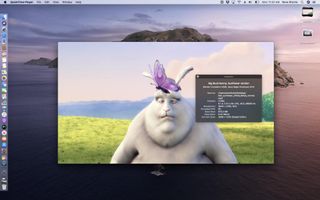
QuickTime has a souped up inspector that shows color space, including HDR format, bit depth, aspect ratio, and scale. If a video has time coded embedded, QuickTime will show it right in the onscreen controls. It also now supports alpha channels so you can export from ProRes 4444 to HEVC and preserve transparency.
Open Image Sequence is also making its triumphant return, so you can create H.264, HEVC, or ProRes movies in the resolution and frame-rate of your choice simply by opening a folder filled with sequential images. So good.
Also, QuickTime now has a picture in picture mode so, with a click, you can leave QuickTime and keep watching your video in a floating, resizable, reposition-able window all its own.

Notes for macOS has always had a gallery view but, previously, it was restricted to image and sketches. Now, in Catalina, it shows you all notes, and all of the note, as a thumbnail so if you're more keyed into visuals than snippets of text, you can more easily find the note you're looking for. Especially, you know, if that note contains images or sketches.
There's also a new search that uses similar computer vision technology as Photos to find objects or scenes within your notes, which is great. And, there's OCR — optical character recognition — text in images, including notes you've photographed from real life or receipts you've scanned in. Which is beyond great. It was the one feature I really liked in Evernote and now it works in Apple Notes.
If you like to organize your notes into folders, you can now share an entire folder if you want to share all the notes inside it. Yeah, it's all or nothing when it comes to folders, so organize and share carefully and accordingly.
I've been doing a ton of writing in Notes and while it still lacks the plain text mode that I would personally cherish, and sometimes the sync between devices isn't as fast as I'd like, it's been a terrific workhorse.
If you like to organize your notes into folders, you can now share an entire folder if you want to share all the notes inside it. Yeah, it's all or nothing when it comes to folders, so organize and share carefully and accordingly.
The only thing really holding it back on the Mac, at least for me, is how abysmally side-by-side apps have been left to languish on the platform. There's a new interface for creating workspaces in Catalina, which is nice. But you still can't swap apps around within them. You have to destroy them and start over. Every time. It's depressing, especially in comparison to how much love they've gotten in iPadOS over the years.

There's an all-new Reminders app in Catalina. It uses natural language parsing to translate what you write into actionable tasks and to-dos. Even if you're writing in the Messages app, if it reads like something that would be good to remember, Siri will offer up as a suggested reminder.
If you tag someone in a reminder, the next time you're messaging with them, you'll be reminded about whatever it is you tagged them into. Also, you can add sub-tasks to your reminders and add attachments like photos, docs, or links that'll help you get all your things done. And there's a new edit button that lets you quickly and easily update and expand your reminders with times, dates, locations, flags, attachments, tasks — whatever it is.
I'm not a huge to-do user. I've always felt they were the Gym membership of apps. A New You resolution you sign up for every once in a while to feel better about ultimately not doing much else.
I use them kind of how I use Music — I tell Siri what I want to be reminded about and when and then hope and pray I actually get reminded about it at the right time. Which is almost always the case.
But, for people who do want more granularity without making task management yet one more task to be managed, and for whom Things or OmniFocus are still too much to-do, Reminders now strikes a much better balance.

Find my Mac and Find my Friends have merged, yes, like Voltron, to make something that feels like it will eventually be much greater than the sum of its parts.
Like Podcasts, it's a port of the iPad version. And, the interface actually translates over really well. Functionally, it's everything I expect. People and devices, all pinned in place.
I especially love that I can see battery status for my devices, so I know if I need to hurry up and track them down so I can charge them up.
The sidebar does reorder when it refreshes, seemingly at random, though, which also makes the map zoom in and out for no good reason. That could be the quirks of GPS, but if Apple could keep it from dancing it'd be a lot less distracting. Not that I leave it open much.
Rumor has it there'll be a lot more coming to the Find My app and Apple's Find My network in the future, and I can't wait.

There's Voice Control, which in theory will let you do everything on your Mac with power words, like right out of Dune or Dungeons and Dragons. It's still a little hit and miss for me, and I have to resort to calling up the numbers more often than I'd like, but as it solidifies it'll be one of the best accessibility enhancements ever to hit the platform.
Screen Time is also now on the Mac. So, no more hiding your social stalking or gaming breaks from the tracker.
It's not a standalone app. Rather, it's in the system preferences much as the iOS version is in settings. It's also got all the same features. So, depending on how much control you want, especially parental control, it still may not be enough for you.
But, I'll repeat this part again: What I like about Apple's approach to Screen Time compared to some others is that it doesn't fell like it's pandering or infantilizing anyone.
It gives you data and then helps you act on it when and how you want to, for yourself and for your family.
New and updated apps: Hidden gems in macOS Catalina explained
macOS Catalina review: Sidecar
Sidecar is a lot of fun. In most cases, I'm just fine using my iPad on its own. It's the best truly mobile computer I've ever owned. But, in two specific cases, Sidecar lets it perform double duty in ways that truly enhance the Mac.

The first is as a second screen. I don't usually do this on the Mac because I dislike turning my head from side to side while I work. But, if I'm working in Final Cut Pro X, which I do a lot, and I need to jump into a conference call or keep track of something in Twitter or Slack, offloading those windows to the iPad display makes a world of difference. Just so great. Especially while traveling, where it's much easier to carry an iPad with you than a Pro Display.
The second is as drawing pad. I used to use Wacom tablets back when I worked as a designer. They were great, but Apple Pencil just blew them away. No digitizer, no air gap, no reticule. Just Pencil to iPad goodness.
Sidecar is a lot of fun. In most cases, I'm just fine using my iPad on its own. It's the best truly mobile computer I've ever owned. But, in two specific cases, Sidecar lets it perform double duty in ways that truly enhance the Mac.
For Continuity Markup and Sketch, which are good examples of Apple really leveraging the integration between devices and operating systems, I can see the convenience if you're already using your Mac and you don't want to switch devices. But, honestly, I'm fine just using the iPad as an iPad.
Where it comes in handy though, is for the apps that aren't on the iPad. Then, I can just pick up my iPad, in Sidecar mode, walk over to the sofa, sit down, Pencil-push things around, and then go back to my Mac. At least in theory. In practice will come as more and more apps add better and better support for it.
iPad is the new Mac: Sidecar Explained
macOS Catalina review: Security
Apple's lofty goal for macOS is to make the system as secure as iOS while maintaining all the traditional flexibility of the Mac. And… that's easier said than done. With iOS, Apple got to start fresh and lock everything down since day one. The Mac, by starkest of contrasts, has been relatively open for decades.
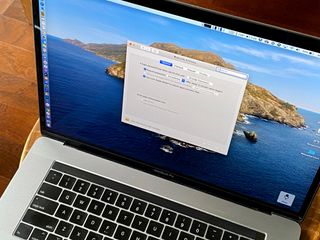
For many years, that was fine. Thanks to the market share and attack surface of Windows, it made far more economic sense for bad actors to go after Microsoft users and leave Apple users alone.
But, now we have the web, we have phishing and spear phishing, ransomware and spyware, we even have ad trackers and social networks and the ability and eagerness of bad actors and unscrupulous companies to target any and every platform and person, including those of us on the Mac.
So, Apple has been carefully hardening macOS against exactly those kinds of attacks. Carefully, because people who are used to the Mac being open are concerned — legitimately sometimes, completely paranoid others — that Apple is going to impose the same type of control it has over iOS.
In a perfect world, Apple would be able to go back and implement everything from bit one. But we don't live in a perfect world and so, while I think some will find these new defensive layers as necessary and responsible, others will find them as blunt, maybe even aggressive.
In a perfect world, Apple would be able to go back and implement everything from bit one. But we don't live in a perfect world and so, while I think some will find these new defensive layers as necessary and responsible, others will find them as blunt, maybe even aggressive.
For experts, there's going to be a lot to parse, from Gatekeeper now checking bundles launched via Terminal as well as files opened in the GUI, to the read-only system partition and the firmlinks that try to make the process as transparent as possible, to DriverKit and Extensions kicking just about everything right out of kernel space.
Where casual users are going to see and feel it more are with all the new privacy protection alerts. Basically, if an app — any app — wants to access anything it didn't create itself, it has to ask. And ask. And ask. And ask. And… you get the idea. Ask. Ask. Ask. Ask.
To avoid a Windows Vista-like death-by-a-thousand-dialogs situation, Catalina will try and leave you alone if you do something deliberate and intentional, like double-clicking a file in Finder, dragging and dropping a file, or use the standard open or save file function.
On one hand, you want this type of accountability so that malware can't just grab anything it wants, any time it wants, without your express permission. On the other hand, it can feel so annoying, and be so overwhelming, that you won't even bother reading it any more and just click away as fast and furiously as you can.
To avoid a Windows Vista-like death-by-a-thousand-dialogs situation, Catalina will try and leave you alone if you do something deliberate and intentional, like double-clicking a file in Finder, dragging and dropping a file, or use the standard open or save file function.
But, if you try to download a file from the web, it will ask you to confirm. For every site. Depending on your point of view, that can be a huge safety net. Or a huge annoyance.
It's at its worst when you first update to macOS Catalina, because literally everything will ask you for permission as soon as it can. It never goes away completely, though.
And that's good and bad. For example, I want to be notified and protected against key loggers. I don't want to be made scared of hotkeys. That requires really good explanations from legitimate app makers, not as to what they want, but as to why they want it.
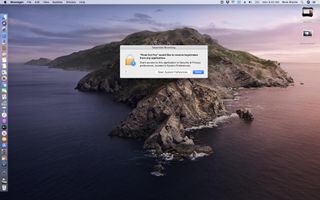
Nerdier, Mac-as-POSIX-box users are going to hate it, as they've hated a lot of the security changes over the last few years. For example, the ability to set Gatekeeper to allow any app download off any website, signed or not, is gone from the GUI. To re-enable it, if you really want to, you have to go to the Terminal. I think that's a pretty damn clever compromise, but I realize not everyone will.
Overall, though, for the vast majority of users, I think it's all for the best. Complacency is the enemy of security. But it's going to take some fine tuning, a little from Apple, a lot from developers, to make it not just as tolerable as possible for users, but as valuable and as insightful as possible, going forward.
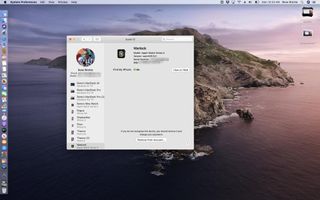
There are some cool new conveniences to mitigate some of the new security measures. Like the new, unified Apple ID pane. Or, Authorize with Apple Watch is my favorite.
Previously Apple Watch could unlock your Mac and approve your Apple Pay transactions. Now it can do almost anything Touch ID can do. Which is especially great on all the Macs Apple still hasn't added Touch ID to — which includes every desktop Mac.
- The Great Mac Balancing Act: macOS Catalina security explained
- Big Business: macOS Catalina in Enterprise Explaied
macOS Catalina review: Catalyst
Problem: There are a ton of apps available for the iPad that simply don't exist on the Mac. Developers may have Mac apps on their nice-to-have lists, but since their iPad apps are built using UIKit and Mac apps are built using AppKit, and since no one has the time or resources to learn and support yet-another-thing, especially for a smaller market, that's just exactly where they stay — on the nice-to-have list.
Solution: Make it easier to bring iPad Apps to the Mac.

With macOS Catalina, Apple's is starting to do just that — but in two very different ways. First, with Catalyst, which essentially lets UIKit apps run on the Mac. Second, with SwiftUI, which will one day abstract away a lot of the interface differences between iOS and the Mac.
SwiftUI is probably the right set of tools for the job, but Catalyst is the right now set. Or, at least, the right-now-er.
In theory, you check a box in Xcode, your iPad app build almost instantly for the Mac, and then you polish it up to be a great Mac app.
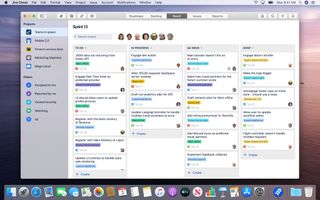
Like I said in the preview, there are three broad classes of apps that are good candidates for Catalyst:
- iPad apps that either don't have Mac equivalents or for which the Mac equivalent has fallen fallow or been previously abandoned. For them, a unified codebase makes creating or replacing the Mac app far more efficient. CARROT Weather is an example of the former, Twitter for Mac the latter.
- iPad apps that have relied on a website for Mac support. Here, native frameworks allow for far more features and far better performance. Netflix is on a lot of wishlists here, but TripIt is shipping now.
- And then there are the cursed Electron apps. The ones actively wasting my memory and destroying my battery life just to wrap themselves in Chromium for that oh-so-not-so-native look and feel anyway. Those, like Slack and Skype, desperately need to switch to Catalyst and fast. But there's no sign they're doing anything of the kind. At least not yet.
If Apple is serious about Catalyst, the way they were about 32-bit apps, Swift, and APFS, all of that should change for the much better over the next year or two.
I say in theory because Catalyst feels a lot like Swift and APFS: Something that will take a few years to really solidify.
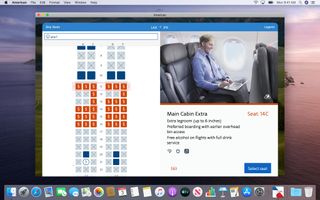
There are a bunch of Catalyst apps coming at Catalina's launch. But they're not the ones I've been looking forward to most.
Those, the ones by the really artisanal indie developers, haven't arrived yet. Because, not every framework they need is there yet, and what's there isn't always supported or documented the way they need it to be yet, to make the apps they want to make — and we want them to make.
Also, they can't offer universal bundles yet, so they can't sell one app for all Apple platforms, all at once. Not every developer wants that, not at all, but for the ones that do, it currently works for all apps except the Mac apps.
Apple also hasn't gone back to redo the interfaces for the original Catalyst test apps from last year, the odd assortment of Home and News and Voice Recorder and Stocks. And they haven't brought over apps that are still missing basic functionality compared to their iOS counterparts and, arguably, need Catalyst the most — looking at you, Messages. (sent with Lasers).
If Apple is serious about Catalyst, the way they were about 32-bit apps, Swift, and APFS, all of that should change for the much better over the next year or two.
That is, unless and until SwiftUI becomes the future of all of Apple's platforms. More on that as it develops.
UIKit on Mac: Project Catalyst on macOS Catalina explained
macOS Catalina review: Conclusion
Last year, Apple put a lot on pause to really deliver not just a few new features but a ton of refinement. This year, it feels like Apple tried to make up for some lost time and maybe bit off just a bit more than they could chew, with different updates coming at different times and a whole lot of bug fixes coming in one after the other. Next year, hopefully, they'll find a better balance.
For now, macOS Catalina is one of the most important updates we've ever gotten. It not only dismantles iTunes and sets up all of Apple's new services, but with Catalyst and SwiftUI, it sets up the future of apps, and ensures the Mac will continue to be a first-class part of that future.
I love the technology, the vision, and the direction, but it's still unpolished in parts and frustrating in others, and that'll take continued time and effort to fix.
If you're at all concerned about release version bugs or worried about app compatibility, by all means, wait and see. Let the rest of us be your testers, and when the point releases start coming, choose whichever one makes you comfortable enough to jump on.
For me, I'm all on board. I even updated my production video machine to Catalina, I missed it enough when I wasn't using it, and that's something I usually wait months to do.
For now, macOS Catalina is one of the most important updates we've ever gotten. It not only dismantles iTunes and sets up all of Apple's new services, but with Catalyst and SwiftUI, it sets up the future of apps, and ensures the Mac will continue to be a first-class part of that future.
What's more, with so much of the foundation of macOS now re-set, I'm most curious to see what all Apple will be building up on them next.

Rene Ritchie is one of the most respected Apple analysts in the business, reaching a combined audience of over 40 million readers a month. His YouTube channel, Vector, has over 90 thousand subscribers and 14 million views and his podcasts, including Debug, have been downloaded over 20 million times. He also regularly co-hosts MacBreak Weekly for the TWiT network and co-hosted CES Live! and Talk Mobile. Based in Montreal, Rene is a former director of product marketing, web developer, and graphic designer. He's authored several books and appeared on numerous television and radio segments to discuss Apple and the technology industry. When not working, he likes to cook, grapple, and spend time with his friends and family.

